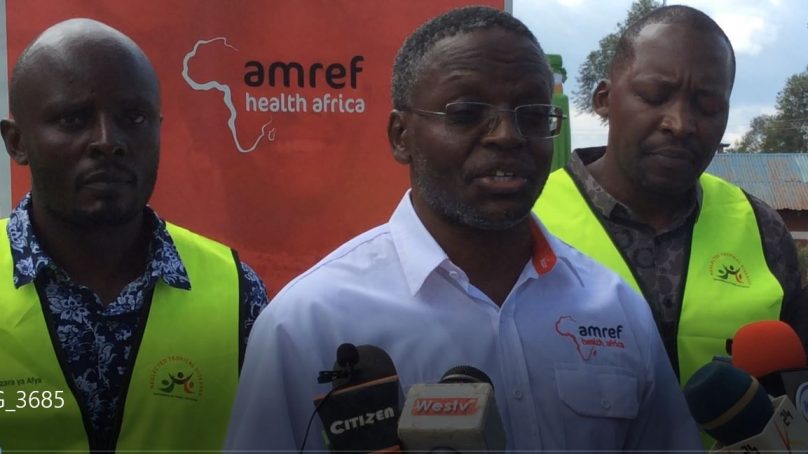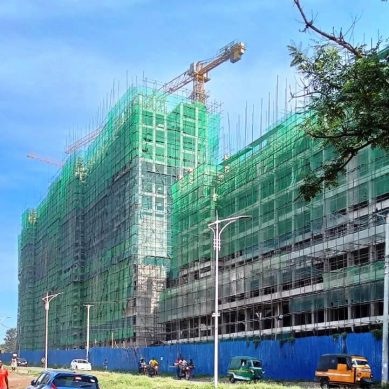
Twenty-five million Kenyans are at risk of contracting ‘forgotten’ tropical diseases without urgent and targeted interventions to curb the threat, an Amref report says. With the population of East African nation estimated to be more than 50 million, the number at risk soars by the day because the diseases are neglected, it adds.
According to Kenya Country Director of Amref Health Africa Ndirangu Wanjuki, who, in an address to residents of Malava subcounty in Kakamega County, noted that the risks posed by the tropical diseases were real and needed urgent government intervention. Dr Wanjuki warned that intestinal worms, bilharzia, elephantiasis, kalazar and trachoma were threat to many Kenyans and should be tackled decisively.
He said more than five million Kenyans are currently on drugs to prevent further transmission of the diseases.
The campaign is run by both county and national governments. He, however, pointed out that Kenya has the capacity to eliminate these diseases by 2030 if it hastened the implementation of policies to bolster primary healthcare across the country.
Through End Fund, Amref is financing the war against the deadly tropical diseases by making available preventive drugs for the elimination of the diseases. Part of the campaign involves treatment of water, hygiene and sanitation at all levels.
In the meantime, Wanjuki acknowledged that efforts by Amref’s partners, Global Fund, have focused on addressing malaria prevalence, billed as a leading killer of children and pregnant women in Kakamega County and the wider Lake Victoria Basin.
“For the past five years, Amref through Global Fund has worked with both county and national governments to train almost 20,000 community health promoters on how to test for malaria using rapid diagnostic kits at home and further offer medical attention for those whose results turn positive. So far, this has been progressive with over five million people having been treated over the past couple of years, hence saving lives,” said the Amref country chief.
He observed that, with the training of health promoters to treat malaria from homes, we have reduced the workload of our health facilities and given them a chance to attend to other diseases. The Global Fund drive towards malaria control in Kakamega is a huge milestone as it does not only save lives, pregnant women and children, he said, but also improves health systems by delegating some of the responsibilities to the community.
The support for health promoters as key planks in addressing healthcare at grassroots levels that are weighed down by poverty, poor infrastructure and general ignorance. In some instances has been associated with witchcraft and superstition.
Ndirangu applauded efforts by health volunteers, which he said provided necessary civic education to rural folks cut off from the rest of the country by communication infrastructure. Through health promoters, he noted, many Kenyans now understand the mandates of Social Health Authority (SHA) and Social Health Insurance Fund (SHIF), resulting in high membership registration.
Kakamega County health promoters have been hailed as pivotal in entrenching SHA an SHIF at the grassroots, raising registration from below five per cent in October to over 15 per cent – and rising. The numbers are expected to rise even higher in December.
“We as Amref, our core mandate is to offer a lasting health change to the common mwananchi (ordinary people) that will transform the health of communities. Amref will continue to support Kenyan leadership on universal health coverage (UHC) and will continue to prioritise key aspects, primary care networks, primary healthcare and financing of primary healthcare,” he pointed.
Amref, he explained, is committed to continue supporting Community Health Promoters (CHPs) to attain their target of ensuring that healthcare is available to all.
“Amref will continue to fund such programmes through donors such as Global Fund, USAID and others to realise this noble initiative, other areas of support from us will include strengthening of electronic health community health information, performance management systems, training of health assistants. Already both county and national governments are offering leadership over that and as Amref our work is to support that,” said director.
Countrywide, he revealed, 16 million Kenyans had registered with SHA that will see the push to tackle and eliminate the neglected tropical diseases.
Already 210 out of the targeted 315 community health primary care networks have been constituted with Amref’s input being at 30 per cent that reflects to 80 in number and this is to ensure that the country has the capacity to offer medical attention to its citizens at the grass root level.
He called on the government to invest in more primary healthcare programmes that will ensure more people had access quality services. He singled out Kakamega county for its operationalisation of the 12 primary care networks that will engage SHA registration and urged other counties to benchmark from it on how to implement the networks.
Tuberculosis remains a leading cause of death in Africa and Global Fund through Amref has trained community health promoters to carryout contact tracing and refer patients for screening with the fund financing the whole process.
This has seen a lot of improvement in TB diagnosis in the country and we will continue to support Kenya and Africa both at the national and subnational level be it a district or county level to bring primary health care to full operational and save lives and through having capacity build front line able workers who can deliver and Kenya is so far doing well as far as financing of the realization of health care networks is concerned.
- A Tell report / By Isaac Wakhungu Andanje







